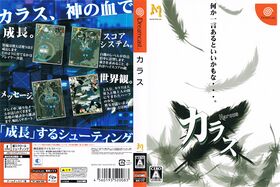History of Sega in Japan
From Sega Retro

|
| History of Sega in Japan |
|---|
This teeny-tiny article needs some work. You can help us by expanding it.
Sega is headquartered in Japan. So quite a lot of history here.
Contents
History
Arcade
Monaco GP bacame the company's last Arcade to use discrete logic circuits rather than a digital CPU.
SG-1000
Sega decided to enter the home console market with SG-1000 after the failure of bringing the ColecoVision to Japan.
Released on the same day as the Famicom, Sega's first console was an initial success by selling about 160.000 units against the company's projection of 50,000 units. Despite having a more powerful hardware, the Famicom suffered for the lack of games and had certain units recalled due to faulty circuits and for the ![]() and
and ![]() buttons getting stuck over time.
buttons getting stuck over time.
By 1984, the Famicom began to outpace the SG-1000 sales by courting third-party developers, which mostly were Sega competitors in the Arcade market (Tsukuda Original was the only thrid-party developer to publish games for the SG-1000).
Sega Master System
Sega Mega Drive
Sega Saturn
Sega Dreamcast
According to an interview made with an anonymous developer, Sega hired the Yakuza to kidnap his young sister in order to make him to stop coorperating with Nintendo. Despite censoring the company's name, he mentioned the Sega's Kakuri Heya (Isolation Room) practice that happened in 2000. [1]
In 2002, Sega ended the third-party support of the system in America and Europe.
In 2007, Sega ended the third-party support of the system in Japan after the released of Karous.
Post-Dreamcast
By 2001, Sega stopped the manufacturing of the Dreamcast consoles and started to developing games for the competitors due of losing sales against the Sony's PlayStation 2. Puyo Puyo Fever became the last first-party game to be released for the Dreamcast.
Unlicensed games

The eroge developer Studio Fazzy became the only known Japanese company to make unlicensed games for the Mega Drive.
References
- ↑ The Untold History of Japanese Game Developers: Volume 2 / John Szczepaniak
